DNS load balancing round robin is a technique used in Domain Name System (DNS) that helps in distributing the traffic between multiple network servers. It improves availability, performance and load balancing within network. It is frequently used for web servers. Administrator creates multiple resource records for web servers in DNS and round-robin feature keep rotating them for proper load balancing. Lets learn it using a real life example.
Round Robin DNS Example
While writing this article our website www.wintelhive.com is running on two web servers. So we have following a records in our DNS server.
- 63.250.43.130
- 63.250.43.131
When a users query against www.wintelhive.com , it returns both IP addresses in response. First IP address is 63.250.43.130 and second IP address is 63.250.43.131. The users browser sends a http or https request to the first IP 63.250.43.130 and website is loaded.
Now another users request same website. Both IP addresses are sent in response. But in this response sequence or order of IP address is reverted. First IP address is 63.250.43.131 and second one is 63.250.43.130. Now the second user will contact 63.250.43.131 to load the website. As a result load is balanced between both servers. This rotation cycle repeats for each DNS request.

Note: Incase first IP address does not respond, users machine will automatically failover to second IP address.
Round Robin Pros
Following are some of the advantages of round robin DNS.
- Failover and High Availability: If one server is not working, failover happens and other IP address is used. This ensures high availability.
- Better Performance and Load Balancing: Since the traffic is distributed between different servers, users observe better website performance and load will be balanced across all nodes.
- Simple and Easy to Implement: It is very easy to implement. You just need to create multiple DNS records and enable round robin feature at DNS level.
- Scalable: The solution is easy to scale. You can add new servers by adding simply another DNS record in existing zone. Similarly removing a server is just a click away by deleting DNS resource record.
- Cost Efficient (Free): Round robin is free of cost and does not require any additional software licensing or complex hardware.
- IPv4 and IPv6 Support: Round robin supports both IPv4 and IPv6.
Round Robin Cons
Following are some of the disadvantages of round robin DNS.
- Inefficient Load Distribution: Load balancing and not while using round robin. Because of DNS cache, browser caches, content delivery network (CDN) load distribution may not be same on all servers.
- No Heartbeat / Health Check: There is not mechanism to check the health or heartbeat of backend server in round-robin DNS. Whether servers are working or not, DNS will still send the same response . Its does not act like advanced load balancers or cluster etc.
- Same Priority: The priority of all nodes participating in a round robin group is same. If you have one server with high specs you and other with low specifications. It can not differentiate between them. It is not possible to split the traffic with 70/30 ratio between them. DNS will treat them equally.
DNS round robin is a very basic feature that can be used by small size organizations only. That’s why some people call it “Poor man’s load balancing”. Large size organizations use load balancers in combination with other different high availability techniques.
Enable DNS Round Robin Windows Server 2019
You can enable round robin feature in Windows DNS using following steps.
- Open DNS server console.
- Go to server properties.
- Go to advanced tab.
- Select “Enable Round Robin”.
- Make sure you have created multiple resource records in DNS zone. Otherwise there is no use of this option.

If your server does not have DNS installed. You can learn DNS server installation step by step process. You my also learn to install Windows server for beginner if you are a newbie in the industry.
Round robin is a basic technique but very useful method that helps in distributing network traffic between multiple servers. It is simple, easy to implement, scalable and cost effective. Its very useful for small scale businesses. However for big organization that require advance feature and round-robin DNS is not a ideal choice for them.
Frequently Asked Questions (FAQ)
The purpose of DNS round robin algorithm is to balance the network traffic between different servers.
No there is no guarantee of 50/50 load balancing because of multiple reasons. One common reason is caching.
If round robin is not enabled, DNS server will still send multiple IP address in the response. But sequence will remain same all the time. So there will be no load balancing.
No. Hardware load balancers are much sophisticated and provide much advanced features.
Yes. It is possible to have more than two servers load balancing through round robin DNS.
-
DNS Port 53 TCP or UDP?
Ever wondered why DNS uses both TCP and UDP? Find out when DNS switches between TCP and UDP on port 53 and why it matters.
-
DNS Forwarder
Learn how a DNS forwarder can boost your network’s speed, improve security. Reduce load for better DNS management.
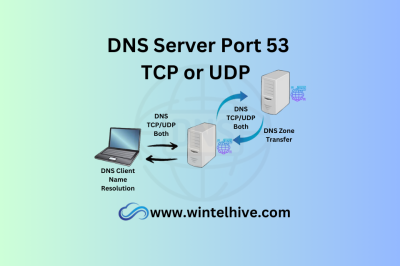
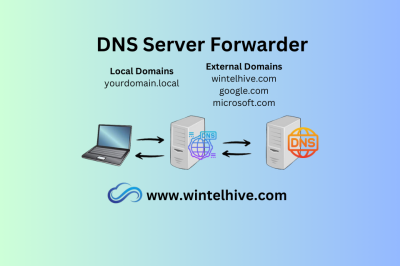

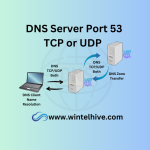
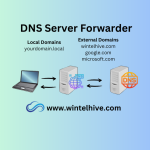
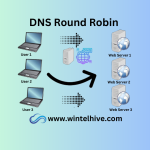

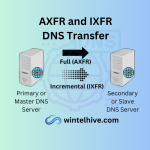
Leave a Reply